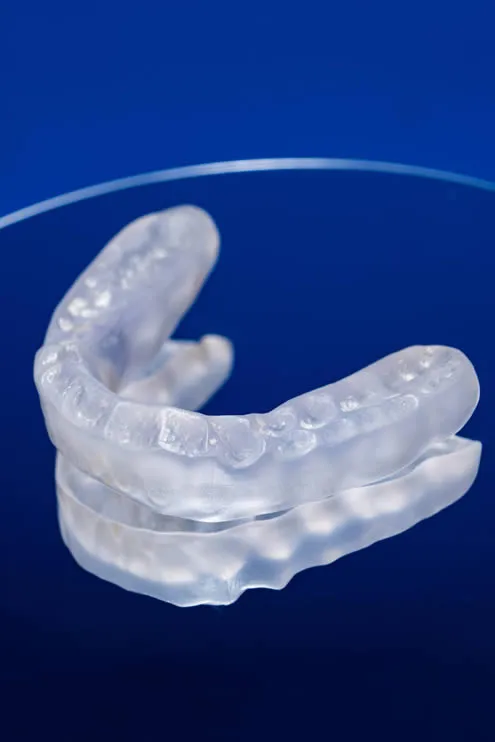Computer Guided Dental Implants
Experience Precision Implant Placement Like Never Before
Computer Guided Dental Implants is an advanced technology used in dentistry to improve the precision and accuracy of dental implant placement. It involves the use of 3D imaging technology and specialized software to create a virtual model of the patient’s mouth, which can then be used to plan the placement of dental implants. This technology allows dentists to place dental implants in a more predictable and accurate manner, resulting in a more natural-looking smile and improved overall oral health.
During the procedure, a small titanium post is placed into the jawbone to support a replacement tooth or teeth. Traditionally, the implant placement has been done manually using surgical guides and experience of the dentist. However, with computer-guided implant placement, the surgeon can use the virtual model of the patient’s mouth to plan and place the implant with a higher degree of accuracy, and without the need for invasive surgery. The software provides detailed information about the bone density, location of nerves, and other factors that affect the success of the dental implant placement.
Computer Guided Dental Implants offer several benefits over traditional implant placement, including a shorter recovery time, reduced pain and discomfort, and improved accuracy. Additionally, the procedure is less invasive, making it a more attractive option for patients who are nervous about dental surgery.
what are the Advantages Of 3D Guided Dental Implants Surgery
There are several advantages to 3D Guided Dental Implants surgery, including:
- Increased Precision: 3D guided implant surgery offers a higher level of precision compared to traditional implant surgery. With the use of 3D imaging technology and computer software, the dentist can plan the exact location, angle, and depth of the implant before the surgery. This results in a more accurate placement of the implant, which leads to a better aesthetic outcome, more comfortable fit, and improved functionality.
- Reduced Risk: 3D guided implant surgery is less invasive than traditional implant surgery, which means there is a reduced risk of damage to surrounding tissues and nerves. The precise placement of the implant reduces the risk of complications and ensures the implant integrates correctly with the jawbone.
- Faster Recovery Time: The reduced invasiveness of 3D guided implant surgery typically results in a faster recovery time. Patients may experience less pain and discomfort after the procedure, and they may be able to resume their normal activities sooner.
- Predictable Results: 3D guided implant surgery allows the dentist to plan the entire implant placement process before the surgery. This means the results are predictable, and the patient can have a more accurate idea of the final outcome of the procedure.
- Patient Comfort: Patients who undergo 3D guided implant surgery expierence more comfortable due to the reduced invasiveness and increased precision of the procedure.
ADDITIONAL FREQUENTLY ASKED QUESTIONS ABOUT COMPUTER GUIDED DENTAL IMPLANTS
In what ways does 3D guided dental implant surgery differ from traditional implant techniques?
Utilizing advanced imaging technology, 3D guided dental implant surgery generates a precise 3D model of the patient’s jaw and teeth, facilitating the planning of the dental implant placement. Consequently, this approach leads to a more efficient, less invasive, and highly accurate surgery.
Does 3D guided dental implant surgery cause more pain compared to traditional implant surgery?
Contrary to popular belief, 3D guided dental implant surgery can result in minimal postoperative pain and discomfort due to its minimally invasive nature. Additionally, the precise implant placement minimizes the risk of damaging surrounding tissues, thereby leading to a smoother recovery process.
Does 3D guided dental implant surgery take longer to perform than traditional implant surgery?
On the contrary, 3D guided dental implant surgery can be a quicker alternative to traditional implant surgery owing to the accurate planning and execution of the implant placement. Furthermore, the utilization of a surgical guide eliminates the requirement for extended incisions and sutures, leading to a faster recovery period.
What is the recovery time for 3D guided dental implant surgery?
The duration of recovery after the 3D guided dental implant surgery may vary based on the complexity of the procedure and individual patient. However, in general, most patients can anticipate returning to their regular activities within a few days to a week after the surgery. Your dentist will offer you comprehensive postoperative instructions to ensure a smooth recovery.
Is 3D guided dental implant surgery more costly than traditional implant surgery?
The expenses associated with 3D guided dental implant surgery may be slightly more than those of traditional implant surgery due to the need for advanced technology and specialized expertise. Nevertheless, most patients deem the benefits of 3D guided surgery, such as precision, efficiency, and long-term efficacy, to be worth the investment.
Who is a suitable candidate for 3D guided dental implant surgery?
Although 3D guided dental implant surgery is an efficient and risk-free procedure, it may not be suitable for everyone. Your dentist will assess your unique case and determine if 3D guided surgery is the most appropriate option for you. Factors like the quantity and quality of bone, medical history, and overall oral health will be evaluated before making a decision.
Is there a dentist near me in Gaithersburg that offers computer guided dental implants?
Yes. At our Gaithersburg dental office we offer computer guided dental implants to patients from Gaithersburg and the surrounding area. Contact our office today to schedule an appointment.















